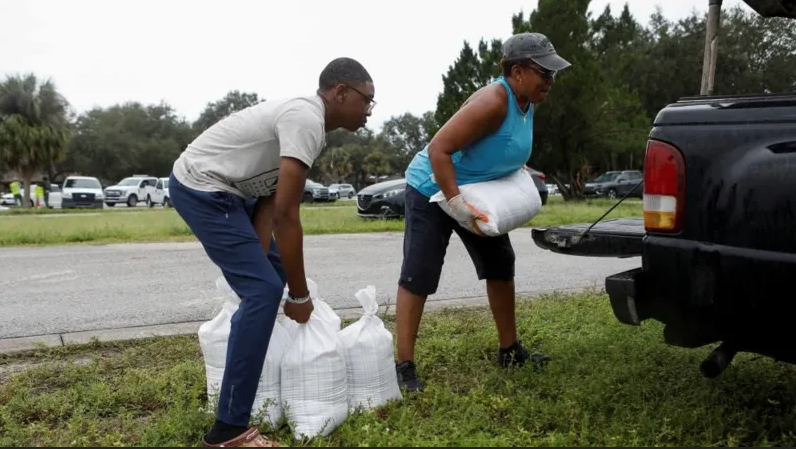Govt builds 15 198 houses in 8 years
Written by on June 19, 2024
A total of 15 198 houses were built and 22 659 plots serviced in urban Namibia by state and private developers in the past eight years.
On average, this represents almost 2 000 houses built annually.
The government allocated more than N$800 million to the construction of basic services, housing, offices and rural development centres for the first time during the current financial year.
Namibia currently has a housing backlog of over 300 000 units.
This was revealed by the Ministry of Urban and Rural Development during a stakeholders’ engagement on a motion on “the need to provide land for the urban poor and landless citizens” at Swakopmund yesterday.
The engagement was hosted by the parliamentary standing committee on transport, infrastructure and housing.
Ministry spokesperson Cornelius Thaniseb said the highest number of houses were built in the 2017/18 financial year, when 4 960 were delivered. This was the same for plot services, which stood at 6 889 that year.
The government allocated N$523 million to the construction of basic services, housing, offices and rural development centres.
Out of that, N$469 million was spent.
During the preceding year, Namibia experienced an economic crisis, with construction, one of its biggest sectors, losing two thirds of its value over five years.
In 2015, the sector involved 5% of gross domestic product (GDP), which in 2019 was down to 2,3% of GDP.
Output severely dropped in the following four months to under 1 500 houses.
During the 2018/19 financial year, some 1 427 houses were built, along with 3 690 plots being serviced.
The government had a budget of over N$560 million and N$539 million was spent.
PANDEMIC TIMES
In 2020, when the Covid-19 pandemic hit, 1 449 houses were built in the country, while 3 210 plots were serviced.
The government’s urban housing budget was N$738 million, of which only N$535 million was used.
During the succeeding year, 1 179 houses were built and 2 846 plots serviced. The budget of the government stood at N$539 million, of which N$406 million was used.
In the 2021/22 financial year, 1 751 plots were serviced and 1 476 houses built. The government set aside N$518 million and used N$484 million.
When Namibia’s economy started to recover in 2022/23, the pace of delivery increased to 2 459 houses, with 1 170 plots serviced.
The government’s funding dropped to N$343 million and N$336 million was used to construct houses.
Last year, 2 245 houses were constructed and 3 103 plots serviced. This was the first time in the eight years that the government used the full amount it allocated to housing, which was N$589 million.
The government built 8 639 houses in the last five years, while close to one million Namibians have been living in shacks since 2008.
The government’s most successful and oldest housing scheme is the Build Together programme, which has produced 41 990 houses since its implementation in 1992.
The National Housing Enterprise’s housing delivery does not meet half of Build Together’s results.
The NHE has constructed 18 304 houses since 1993.
STRUGGLES
Thaniseb said budgetary constraints and prolonged procurement processes are some of the challenges preventing faster delivery of servicing land and housing.
“The non-compliance with procedural procurement processes by regional councils and local authorities is resulting in significant delays in the appointment of service providers, including consultants and contractors,” he said.
Thaniseb went on citing the failure of service providers to complete projects on time.
The Mass Housing Development project delivered 4 380 houses in 10 years.
He suggested that the government increase the budget allocation.
“. . . allocation of budget say for three consecutive years, instead of the yearly allocation, currently implemented. Make budget provision to improve competency in the State Finance Act, treasury instructions and the Public Procurement Act,” Thaniseb said.
In March, the leader of the official opposition, McHenry Venaani, said merely allocating money for housing would not solve the country’s housing shortage.
“There’s no clear planning on how we want to achieve housing. We have a backlog of close to 700 000 houses.
You are not giving subsidisation to municipalities. Giving money to a problem does not answer the problem.”
Venaani said the government should employ a more strategic approach.
“I would have given money away right now for plots so the people can access services. If you give more plots to the people, people would be able to build homes.”
URBAN NEEDS
Erongo governor Neville Andre yesterday at the consultation said about half of Namibians live in urban areas.
“At the time of independence just a little more than 30 years ago, this figure stood at about thirty 30% and over the next 30 years, we will catch up with the majority of countries worldwide that are more than 70% urbanised,” he said.
Andre explained that in practical terms this means Namibia would have to accommodate about two million additional residents in urban areas, which nearly equals our current overall population.
“However, unlike the urbanisation of much of the developed world that was fuelled by large-scale industrialisation, our cities, like most on the African continent, are rapidly expanding, despite industrialisation and job creation advancing at the required scale,” he said.
The new housing policy states that the delivery of urban land and housing is a complex undertaking.
“… which involves overlapping stakeholders, markets and legal systems for accessing land, finance and service provision, including water, electricity, sewerage reticulation and eventually the construction of houses,” the policy reads.
The post Govt builds 15 198 houses in 8 years appeared first on The Namibian.


